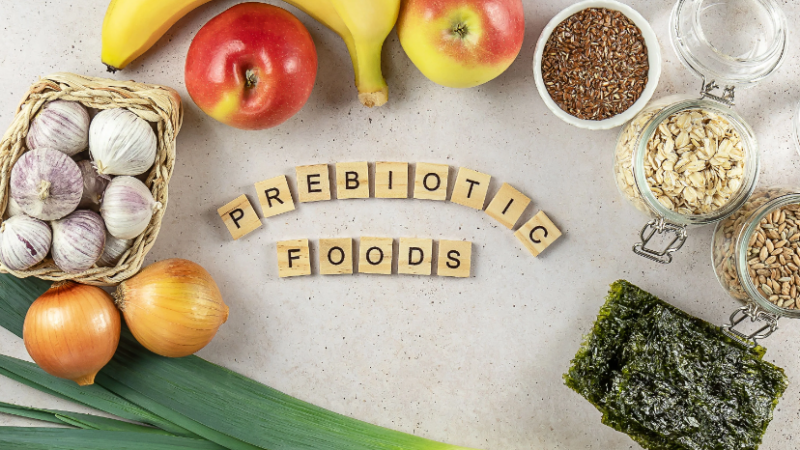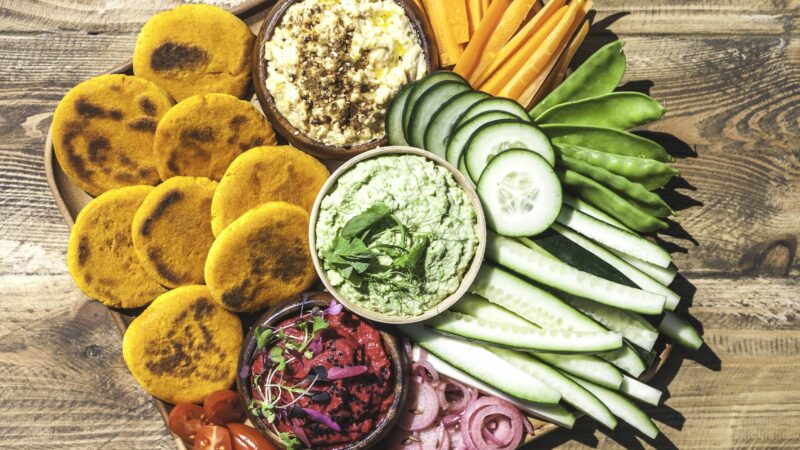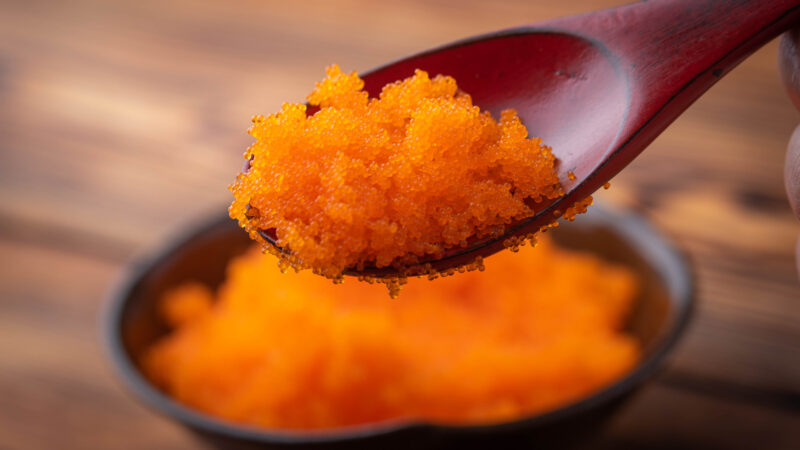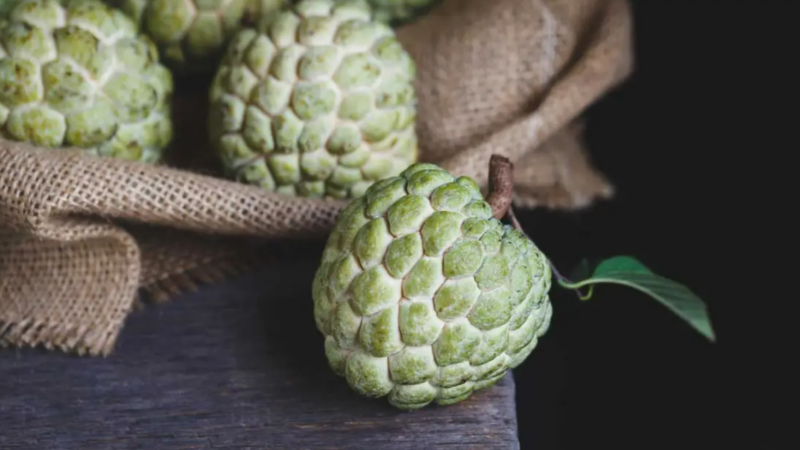What Does it Mean To Have Red Egg Yolk?
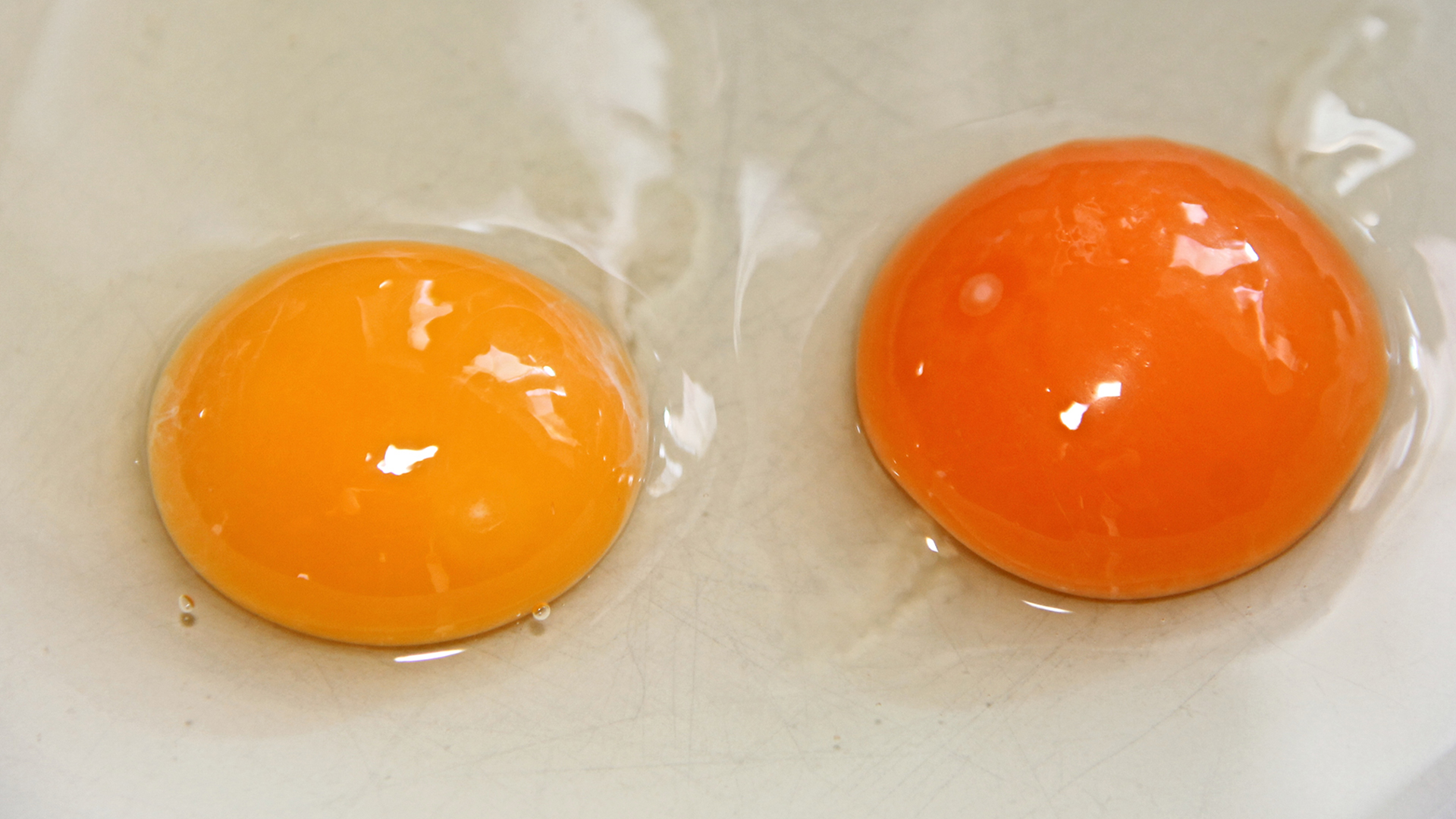
Red Egg Yolk – As you crack open an egg and discover a vibrant crimson hue staring back at you, it’s only natural to wonder what could be causing this mesmerizing deviation from the typical sunny yellow. In this article, we’ll explore the various reasons behind a red egg yolk, ranging from natural occurrences to potential implications for your health and diet. So, if you’ve ever wondered about the enigmatic crimson yolk, buckle up as we embark on a fascinating journey to unravel the mysteries behind this captivating egg variation.
Why is There Red in My Egg Yolk?
The presence of red in your egg yolk can be attributed to various factors, the most common being the diet of the chicken that laid the egg. The pigments primarily influence the egg yolk colour in the feed consumed by the chicken. In particular, a diet rich in certain dyes, such as xanthophylls and carotenoids, can lead to a more intense yellow or even red-orange colouration in the yolk.
For instance, a diet high in red or orange plant-based pigments, like those found in certain fruits and vegetables such as red peppers or marigold petals, can transfer those pigments to the yolk, resulting in a red or orange hue. This is more commonly observed in free-range chickens or those with access to diverse natural foods.
Furthermore, some specific breeds of chickens are genetically predisposed to lay eggs with darker-colored yolks. Species like Rhode Island Reds and Marans are known for producing eggs with deep, richly coloured yolks, which might appear red or reddish-brown.
While red in your egg yolk is generally harmless and merely a natural variation, it’s essential to ensure that the eggs are fresh and not spoiled, as rotten eggs can also exhibit unusual colours and unpleasant odours. Suppose you consistently notice red yolks in your eggs and have concerns about their quality or origin. In that case, consulting with a reputable poultry supplier or your local farmer is best to gain more insights into the chickens’ diet and breeding practices.
Is it Safe to Eat a Red Egg Yolk?
In most cases, a red egg yolk is perfectly safe to eat. As mentioned earlier, red in the yolk is primarily due to the chicken’s diet, and it’s often caused by consuming pigments from natural sources like fruits, vegetables, or certain plants.
Egg yolks with reddish hues are more common in chickens with access to a varied diet, especially those raised in free-range environments or fed a diet rich in certain pigmented foods. The colour variation doesn’t indicate spoilage or contamination and is generally considered a harmless natural variation.
However, ensuring the eggs are fresh and properly handled is crucial. Always follow standard food safety practices when handling, storing, and cooking eggs to reduce the risk of foodborne illnesses. Make sure to check for any signs of spoilage, such as a foul odour or an off-putting appearance. If the egg looks or smells unusual, it’s best to discard it.
Additionally, if you have specific dietary restrictions or concerns about food colouring or pigments, you may want to consult a healthcare professional or nutritionist for personalized advice.
In summary, red egg yolks are generally safe to eat and are often a result of natural pigments in the chicken’s diet, but always exercise proper food safety precautions to ensure you enjoy your eggs safely.
Will a Bloody Egg Make You Sick?
Eating a “bloody egg” or an egg with a blood spot is not inherently harmful or likely to make you sick. A blood spot in an egg yolk is a small, reddish spot that results from the rupture of a blood vessel during the egg formation process. It occurs relatively rarely and is generally considered a natural and harmless occurrence.
A blood spot in an egg does not mean the egg is spoiled or contaminated. Consumption is safe if the egg is fresh, properly handled, and cooked.
However, some people may find the presence of blood spots yucky, and the presence of such spots might affect the aesthetics of certain dishes. In commercial egg production, eggs with blood spots are usually removed during the candling process (which involves shining a light through the egg to check for defects) before they reach the consumer.
If you come across a blood spot in an egg and are uncomfortable with it, you can remove the spot before cooking or use the egg for recipes where the appearance is less critical, such as scrambled eggs or baked goods.
To ensure egg safety, always buy eggs from reputable sources, store them properly in the refrigerator, and cook them thoroughly to reduce the risk of foodborne illnesses associated with raw or undercooked eggs. If you have any concerns about the safety of eggs or specific dietary requirements, it’s always a good idea to consult with a healthcare professional or nutritionist for personalized advice.
What’s Considered a Bad Egg Yolk Color?
A bad egg yolk colour typically refers to an abnormal or off-putting colour that may indicate spoilage or other issues with the egg. While egg yolks can naturally vary in colour depending on the chicken’s diet and breed, certain colors or appearances can indicate potential problems. Here are some egg yolk colours that might be considered “bad” or indicative of issues:
- Green or Gray: An egg yolk with a green or grey tint usually suggests that the egg is overcooked or has been subjected to high temperatures for an extended period. This can occur when eggs are boiled too long or excessively high heat. The green or grey colour results from a chemical reaction between the iron in the yolk and the sulfur in the egg white, and it is not harmful but can affect the taste and texture of the egg.
- Pink or Red Streaks: If you notice pink or red streaks in the egg yolk, it could indicate the presence of blood in the egg. While a tiny blood spot (mentioned in the previous answer) is generally harmless, larger amounts of blood could indicate a health issue in the chicken and make the egg less appealing to some consumers.
- Unusual Bright Colors: If the egg yolk is highly bright or artificial-looking, it might indicate artificial dyes or food colouring used in the chicken’s feed. While natural pigments can lead to variations in yolk colour, unnaturally bright colours might raise concerns about the chicken’s diet and the potential use of additives.
- Foul Odor: If the egg yolk has an unpleasant or rotten odor, it’s a clear sign of spoilage. Fresh eggs should not have any noticeable smell, so a foul odor is a definitive indicator that the egg is no longer safe to eat.
Remember that slight variations in egg yolk color are normal and are influenced by factors like diet and breed. However, any drastic, unnatural, or off-putting color changes, along with foul odors, should be taken as potential signs of spoilage or issues with the egg. In such cases, it’s best to err on the side of caution and discard the egg to avoid any risk of foodborne illnesses.
Are eggs with pale or light-colored yolks less nutritious?
The color of the egg yolk does not necessarily reflect its nutritional value. While a darker yolk may indicate the presence of certain nutrients, the nutritional composition of the egg remains largely unaffected by its colour. Both pale and dark yolks contain essential nutrients like protein, vitamins, and minerals. The most important factor in determining egg quality and nutritional content is the chicken’s overall diet and health.
Conclusion:
The presence of red or reddish hues in egg yolks is primarily influenced by the pigments derived from the chickens’ diet, with fruits, vegetables, and certain plants playing a significant role in the coloration. Thankfully, a red egg yolk is generally safe to eat and does not indicate any spoilage or contamination. While some may find the variation in yolk colors intriguing, others might prefer the traditional sunny yellow.
In either case, the diversity of yolk hues adds an element of wonder to the culinary experience and reinforces the importance of providing chickens with a wholesome, well-balanced diet. So, the next time you encounter a red egg yolk on your plate, savor the natural splendor of this colorful creation, appreciating the remarkable connection between the chicken’s diet and the mesmerizing palette of the egg yolk.
